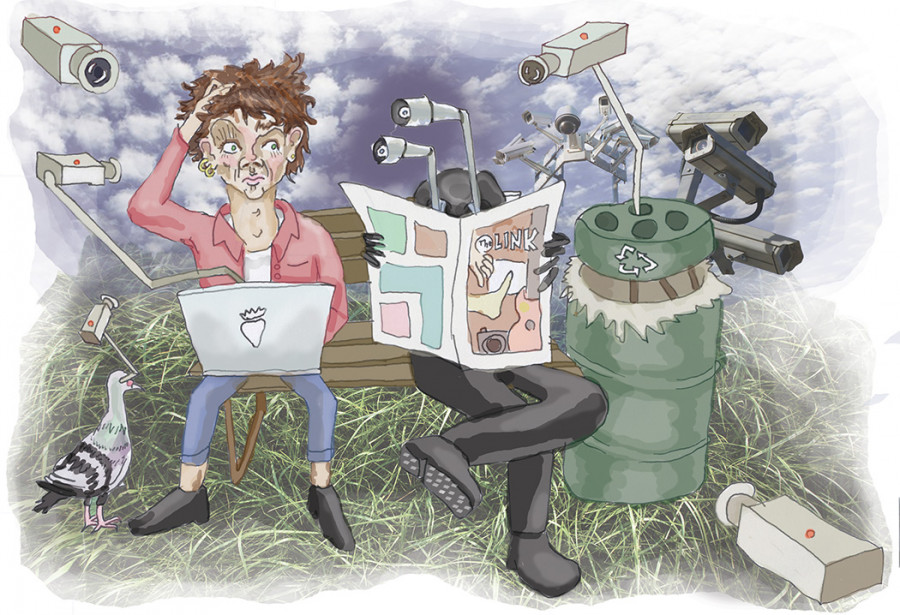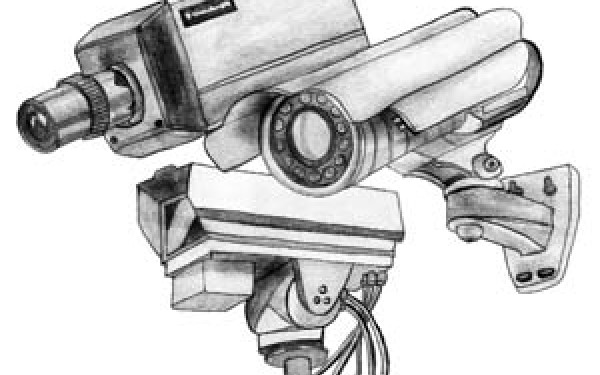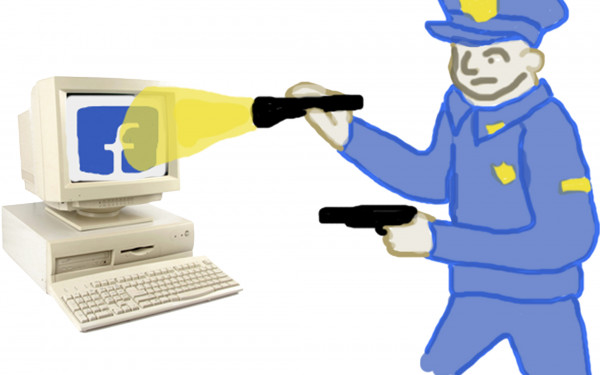Smile! You’re on (a Lot of) Cameras
Surveillance, Safety and Sacrifice in the Age of the “Smart City”
You’ve probably heard about it from ads on the metro, chipper TED Talk speakers or even Montreal mayor Denis Coderre: some futuristic quasi-utopia, the “smart city,” is apparently on its way.
What this means, exactly, isn’t clear. Underground Wi-Fi? QR codes on trees? Turning the statement “there’s an app for everything” into a horrifyingly literal truth?
Though definitions vary, at the core of the smart city concept is the digital enhancement of civic functions. There’s a moral dimension to this enhancement, with some definitions of the smart city prioritizing environmental sustainability or empowerment of the citizen. This is, understandably, an exciting idea for many.
But there’s a sinister side to this enthusiasm. If a smarter city is one that knows more in general, then it’s bound to know more about its inhabitants. The data zeitgeist has swept over police departments worldwide, enhancing the recent practice of “predictive policing”—a methodology that sounds good in theory and looks like bloated surveillance in practice.
London, for instance, is infamously covered in security cameras—there’s one for every six people in a city with a metropolitan population of over 13 million. Swedish security camera manufacturer Axis Communications boasts of 150,000 of its cameras installed in the Stockholm transit system alone. In North America, moves to supplement policing with additional data are producing some morbidly fascinating work.
Leon Neyfakh’s recent article in The Atlantic, “The Future of Getting Arrested,” lists microphones that analyze loud noises to see if they’re gunshots, marijuana breathalyzers and tablets with facial-recognition software among developments in police technology. These outlandish developments accompany more familiar features like police body cameras, which have yet to become widespread but are ostensibly meant to keep cops in check just as much as the people they interact with.
If these solutions sound too simple, they should. It’s easy to picture the police rushing to the scene of what a computer told them was a gunfight and was actually something as simple as fireworks. More disturbingly, we’ve seen from the case of Eric Garner, who died last July after a New York City police officer placed him in a chokehold, that clear video evidence has absolutely no effect on an unjust status quo. Almost every example of “smart policing” that Neyfakh investigates is only useful for skewing the imbalance of power even further in favour of the police. Exactly how powerful the police stand to become, though, is an open question.
The closed-circuit TV cameras we already have aren’t proving to be very useful. The Campbell Collaboration, an international social sciences research group, found that CCTV cameras work well in parking lots but don’t make much of a difference in crime rates in city centers, public housing or around public transportation. In 2009, an internal report by the London Metropolitan Police found that for every 1,000 cameras in London, only one crime was solved. The report further noted that CCTV helped solve only eight out of 269 robberies in a single month.
Surveillance techniques deployed by cities can even be used against them. In its Safe Cities Index 2015 White Paper, The Economist reported on a Russian website that streamed live video from CCTV schemes and webcams across the world. Those cameras had been hacked using default password settings found online.
If the technology we have to make us feel safer is often ineffectual or can be co-opted, then the prime function of surveillance is nothing short of messing with our heads. This is so widely understood, intuitively or explicitly, that fake security cameras are widely available for use in the home or in businesses. Even real security cameras, turned off, aren’t uncommon as deterrents. Surveillance is as much symbolic, or even more so, than it is practical. As it becomes more ubiquitous, increased psychological manipulation can only follow suit.
Are we on our way to dystopia where someone watches our every move? There’s room for a little optimism here.
In Neyfakh’s article, University of Missouri computer-science professor Kannappan Palaniappan notes that data storage is still way behind what would be needed for 24/7 citywide video monitoring. Surveillance on that scale is unappealing to pretty much everyone, and it’s feasible that citizens’ rights groups and city councils could effectively stop such developments in their tracks.
Still, as Jay Stanley of the American Civil Liberties Union points out in Neyfakh’s piece, “there’s a lag between when people lose their privacy and when they really start to feel it.” We’re already being monitored, but not everyone is worried yet.
The smart city won’t be dystopian (and, of course, not utopian either), but even if sufficient “smartness” is ever achieved, the city of the future will likely have many of the same problems it does today. So long as we continue to treat crime as a cause in itself and not a symptom of social conditions we can fix and so long as we treat our privacy as an option rather than a right, policing in the smart city will be little more than a chrome facelift on a malfunctioning system that tends to fail more people than it helps.


_600_832_s.png)



onFacebook)_600_375_90_s_c1.jpg)
